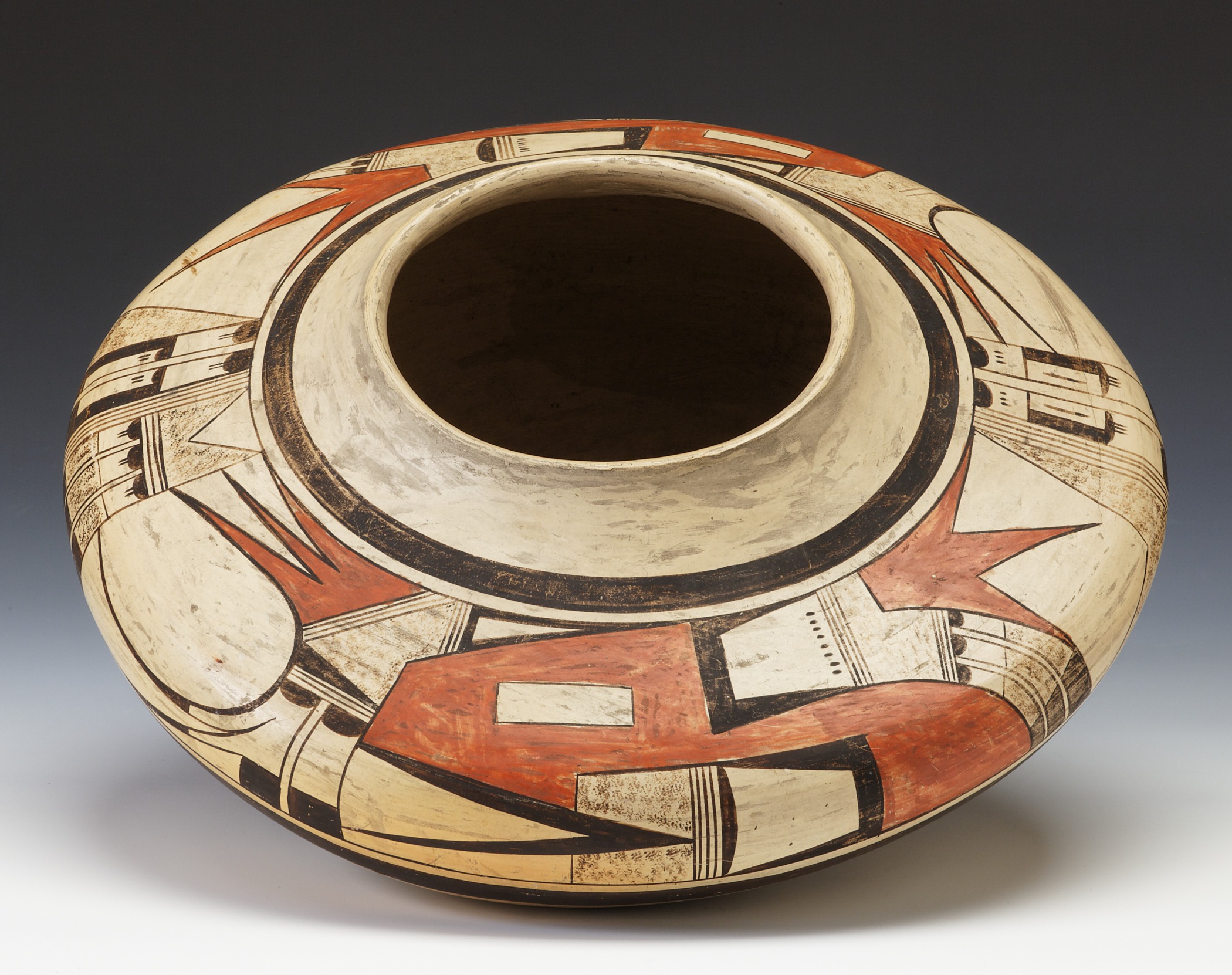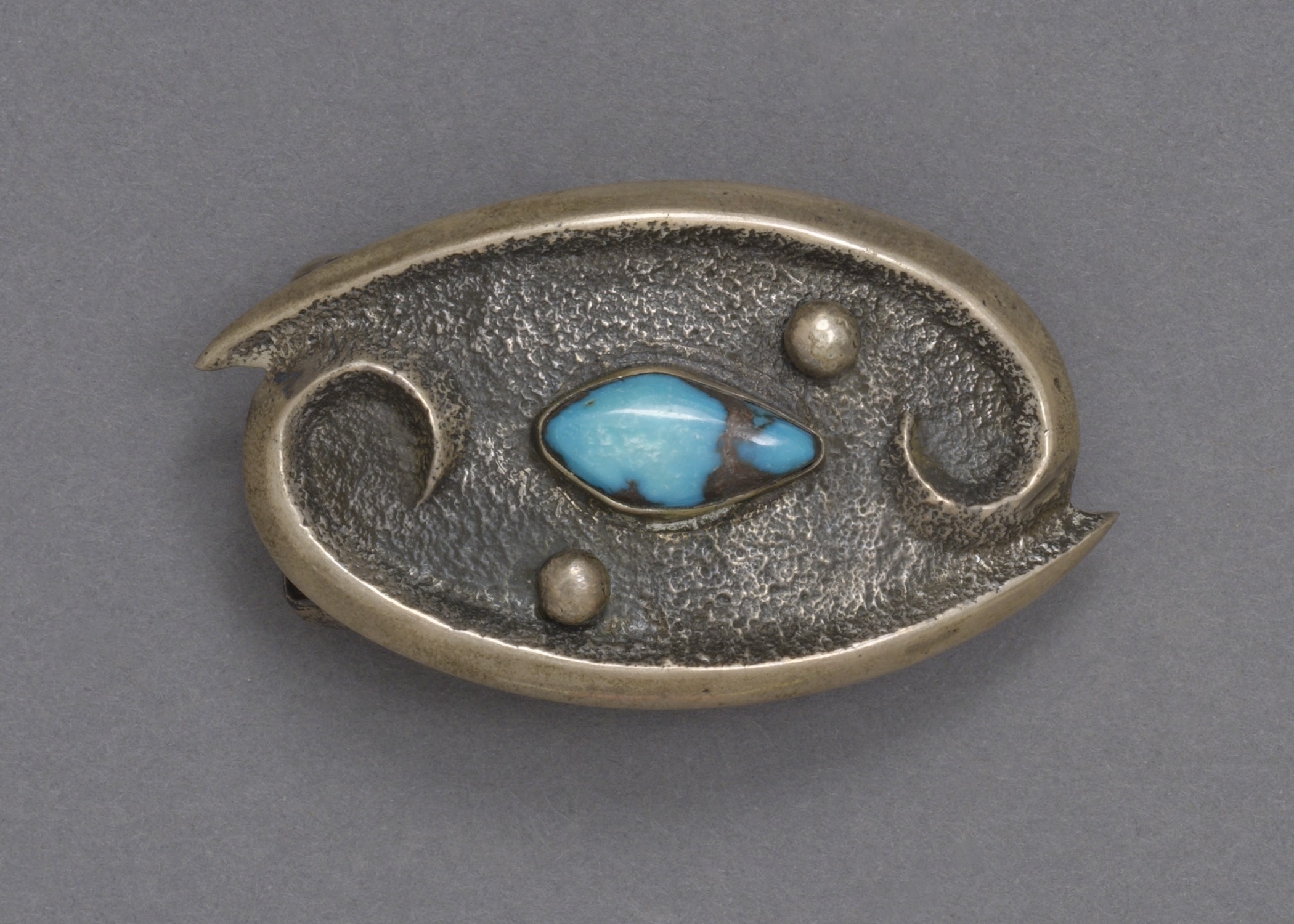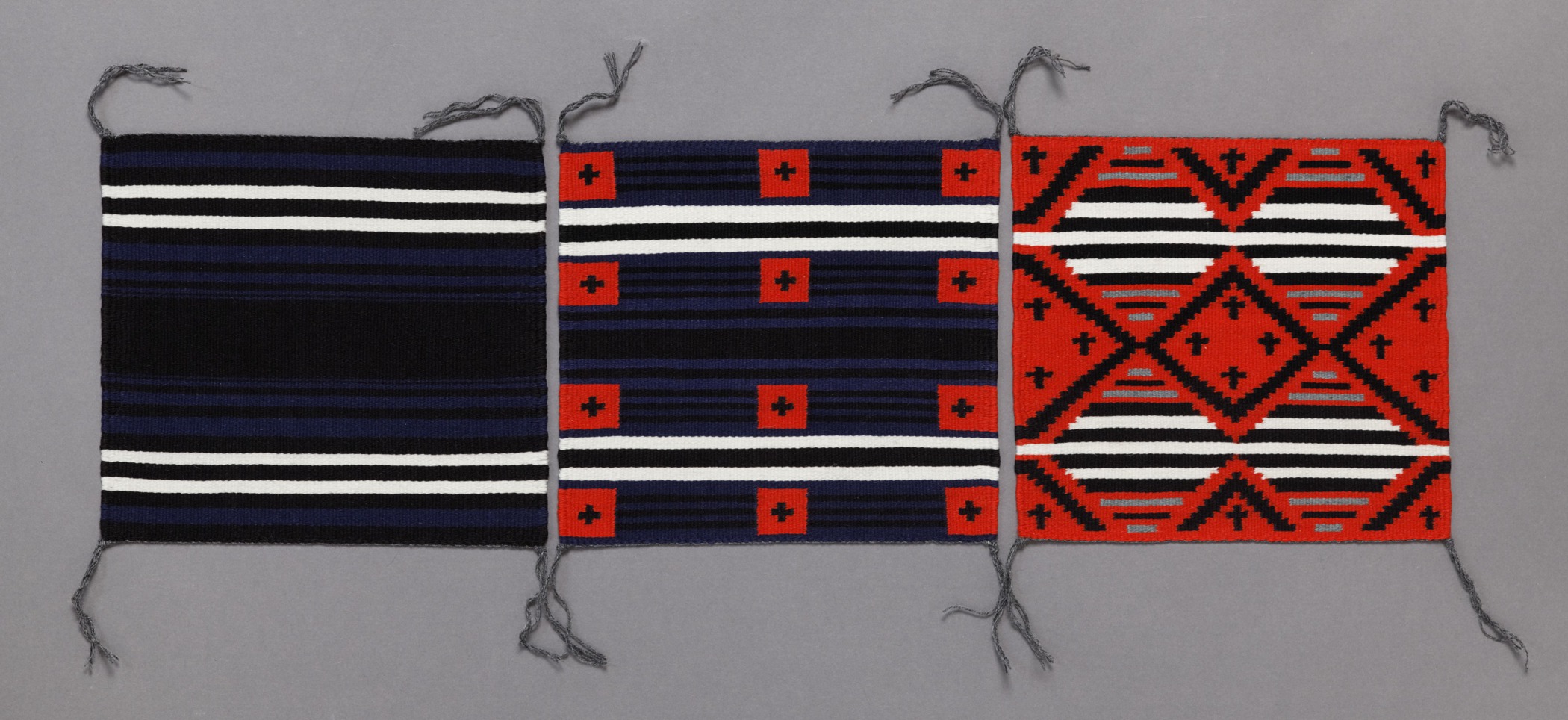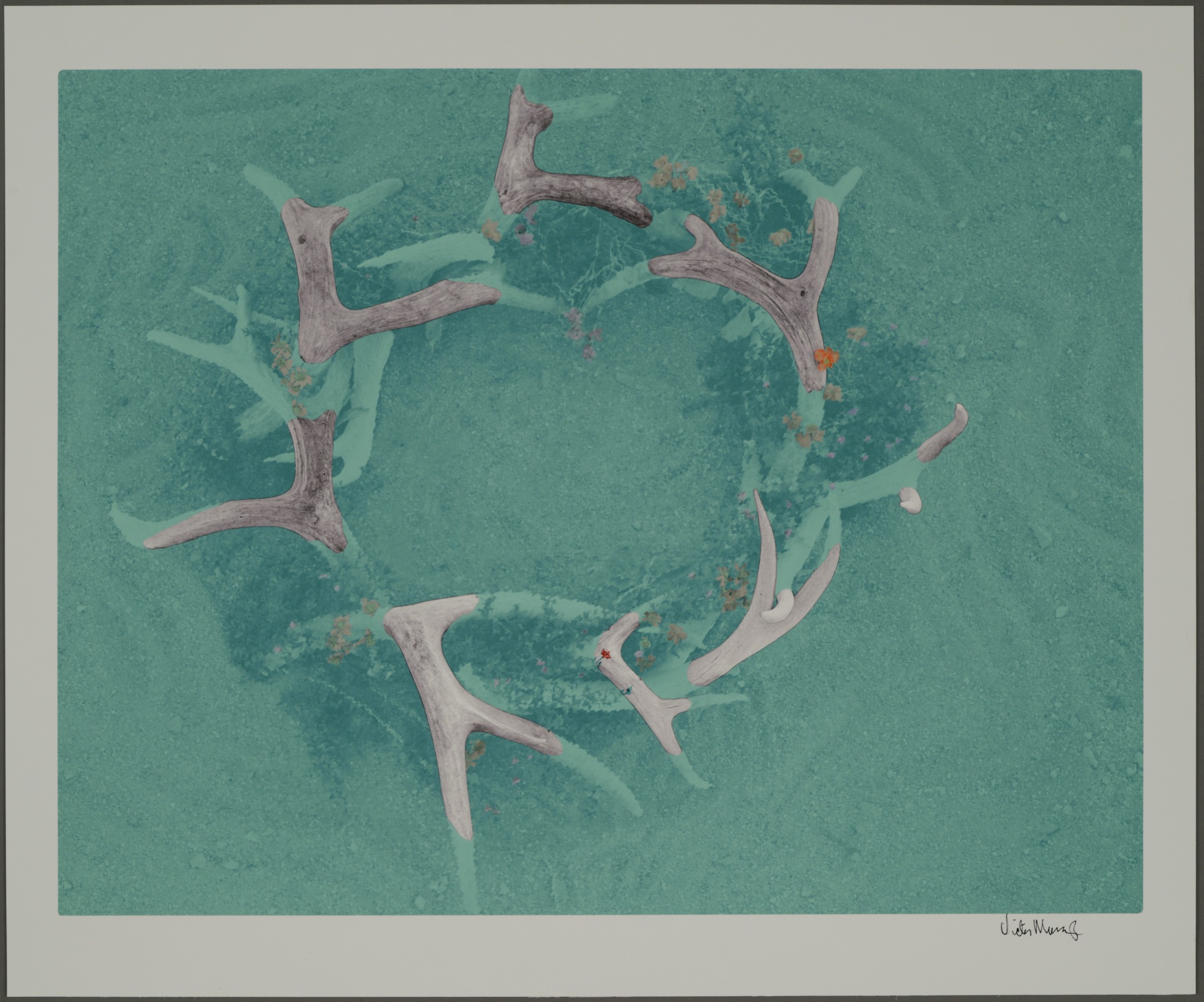Preston Monongya, American (Hopi), 1927–1987
Silver belt buckle
- 1969
- Silver and turquoise
- 1 3/8 × 2 3/8 × 13/16 in.
Hood Museum of Art, Dartmouth College: Purchased through a gift from Richard K. Meyer; 170.5.24936
visibilityLook & DiscussJewelry has occupied an important place in the economy of the Southwest for thousands of years. In addition to expressing cultural ideas and beliefs, jewelry once served as a type of currency for native cultures. Pre-contact, jewelry made of valuable semi-precious stones, like turquoise, was traded between groups.
After the arrival of Europeans, jewelry was used as a form of payment to traders for goods, and to native people when they sold crops or wool. Artists also created jewelry for sale to tourists. These sales helped support many native families.
Jewelry making remains a vital art form in Southwestern culture. This belt buckle was made in the 1960s by Hopi Artist Preston Monongya (Mone-Ahn-GEE-yah).
explore the object
This belt buckle is made of silver and turquoise. It is oval in shape, with raised polished curves and dots that contrast with the dark, rough texture of the background. The design expresses balance and harmony, concepts that are valued in Hopi culture. An oval-shaped turquoise has been set into the center.
In Southwest cultures, turquoise is more than a gemstone. It is associated with protection, purity, water, and sky. Turquoise jewelry in the form of carved pendants, beads, or inlaid mosaics have been a part of Southwest culture for thousands of years.
When Spanish and Mexican settlers arrived, they brought with them new materials in the form of iron, copper, brass, and silver. Native artisans acquired these metals in trade and learned how to work them. They melted down US and Mexican silver coins, platters, and silverware and pounded, stamped, and shaped them into beads, buttons, or pins. In the 1880s, the Santa Fe Railroad brought the first passengers to the Southwest, creating a new market for native-made jewelry. At this time, artists began setting turquoise into silver, using recycled stones, raw nuggets, or stone that they acquired from trading companies.
Preston Monongye learned to make jewelry from his uncle. He sought to honor Hopi tradition while also finding ways to express his own individuality. His work is similar to the overlay style developed by Hopi artists in the 1930s to distinguish their jewelry from Diné (Navajo) or Zuni pieces. In this method, designs inspired by pottery, baskets, and weaving are cut from one piece of silver. That piece is then soldered onto another piece of silver. The exposed areas are textured and oxidized black. Monongye’s jewelry possesses the same textured surface, but is more sculptural in form. Monongye argued for something he called “the new Indian art.” He wrote, “We may use old techniques, along with old designs taken from potsherds or pictographs, but then we redesign them or add innovations of our own.” (See anmh.org.)
meet the artist
Preston Monongye was born in California to Mexican and Mission Indian parents. When he was 7, he was adopted by a Hopi family, moved to the Hopi Reservation, and learned to speak the Hopi language. When he was only nine, he began helping his uncle make jewelry by pumping the bellows to melt silver pesos and US coins. Later, he learned how to pound the silver into beads and shapes. During World War II, he joined the US Army and served as a paratrooper in the South Pacific, and ten years later, he served again in Korea. Throughout this time he continued to make jewelry, finally turning to it full-time in his mid-30s. Although at first he practiced a style associated with Hopi tradition, he became adamant that native jewelry not be bound by the past. He explained, “An old piece of philosophy given to me by my father and other men of the Hopi Mesas is, ‘If you can progress without hurting your tradition or your religion, you should do so.’” (See anmh.org.) Monongye’s jewelry has won many awards. His son, Jesse, is also a famous Hopi jewelry maker.






